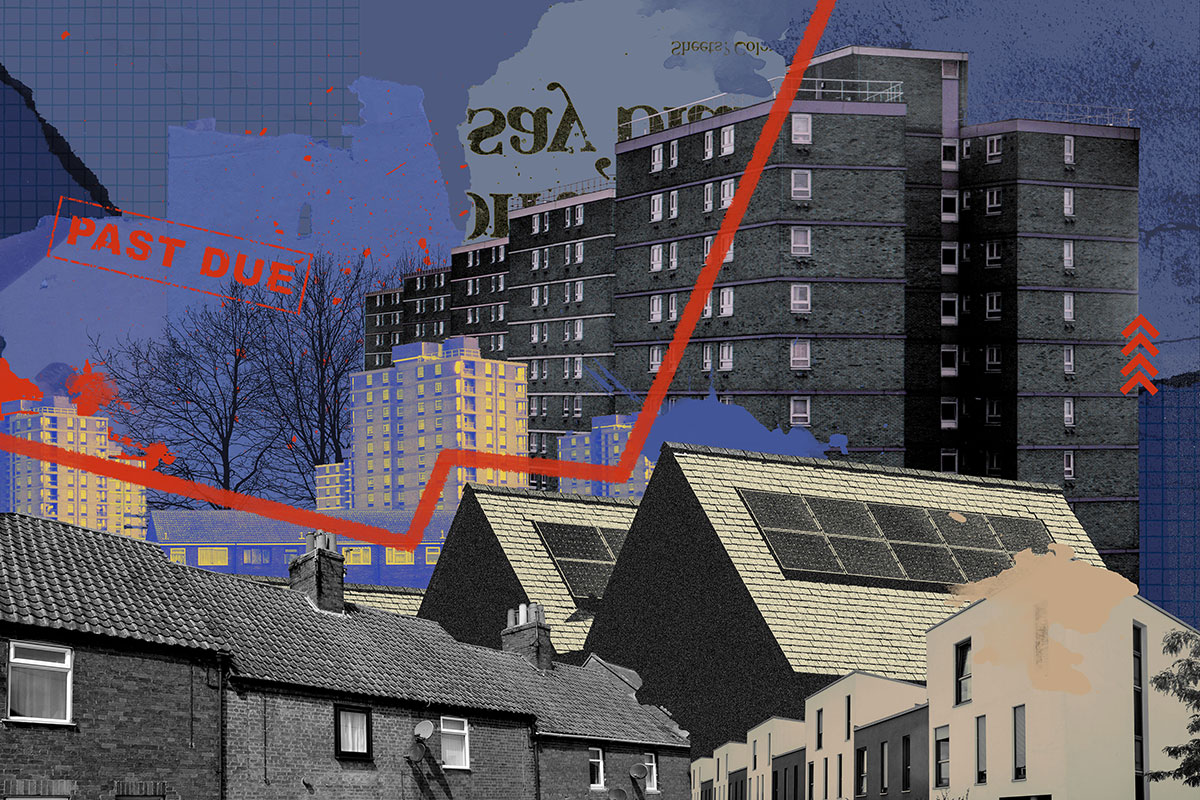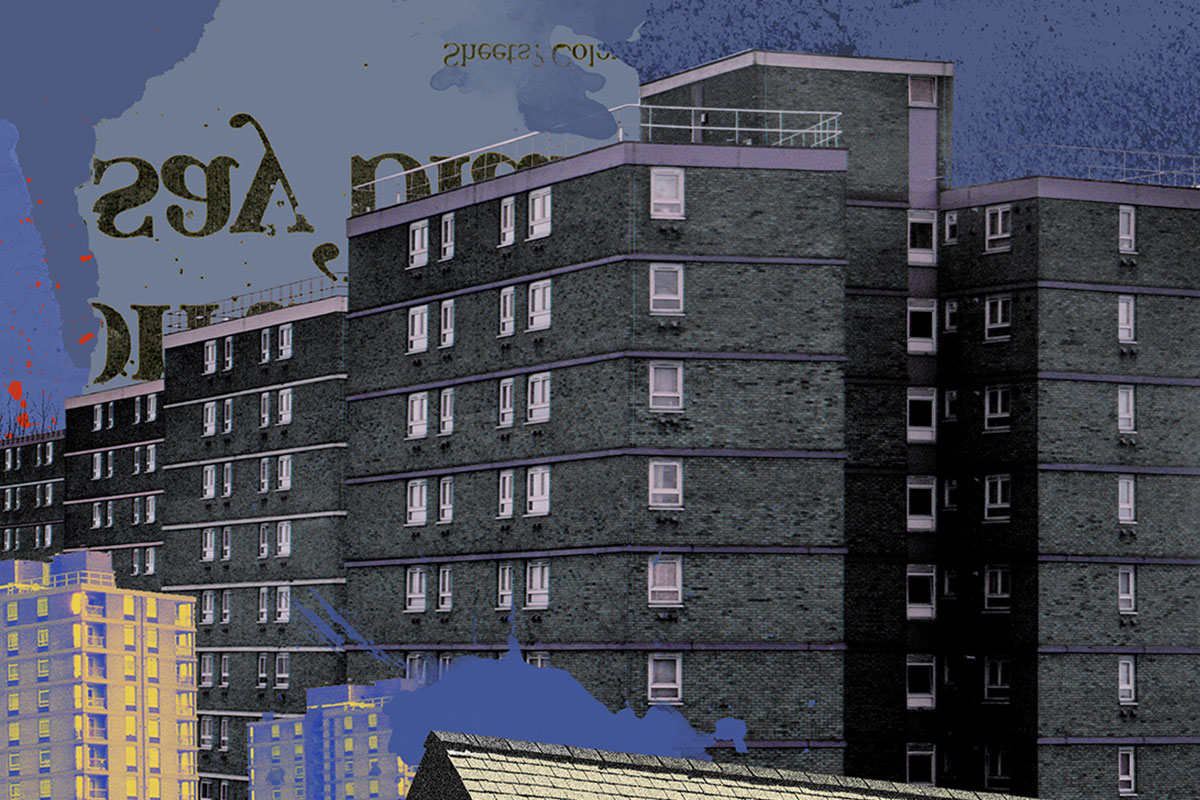You are viewing 1 of your 1 free articles
Putting the rents up: why are 94% of social landlords planning for a maximum rent rise?
For four years, social housing rents have been cut. But they will start to rise again in April. Peter Apps finds out why – and what the effects will be. Illustration by Eleanor Shakespeare
In April, in almost four million social homes across England, something will happen that has not happened for four years. The rent will go up.
After four years of being required by law to cut rents by 1% every year, the sector is now free to increase them again by the Consumer Price Index (CPI) plus up to one percentage point. In practice, this means a 2.7% rent rise.
Most of the sector is taking up this freedom. Auditor RSM conducted a survey for Inside Housing of 123 English housing providers of varying sizes and found that 94% will take up the maximum rent rise.
Perhaps the most surprising thing about this figure is that it is only 94%. The sector needs an unprecedented level of investment, so it was inevitable that the vast majority of landlords would maximise their income after four years of cuts.
But increasing rents should never be an easy decision. This week, Inside Housing asks why providers are doing it, as well as what questions they are asking themselves.
The answer to the first question is essentially obvious – housing providers are facing an enormous funding challenge on three main fronts.
First, making buildings safe and compliant with the developing post-Grenfell building safety guidance has put a huge and unexpected pressure on resources over the past three years. Most landlords have prioritised this work, reasoning that it cannot wait.
Second, reducing carbon emissions entails huge and costly programmes to retrofit homes, strip out gas boilers, install car-charging points and so on. No one has yet publicly put a figure on the total cost of this work, but it is likely to be eye-watering.
Finally, the sector remains committed to the enormous housing pipelines it has promised Homes England and the Greater London Authority.
Put together, these three funding pressures are colossal and the £12bn of affordable housing grant plus £1.4bn for cladding remediation do not begin to cover it. The additional money must come from somewhere, and rent is currently the only place to increase income.
“Every time you put the rents up, you have to think about it carefully. But there’s a balance between [keeping costs down for residents], the provision of services, meeting the quite exceptional cost pressures we face at the moment and continuing to develop,” says Helen Evans, chief executive of 20,000-home Network Homes and chair of the G15 group of large London housing associations.
“I don’t think housing associations will be increasing rents just because they can,” adds Melanie Rees, head of policy at the Chartered Institute of Housing. “They find themselves in a difficult place at the moment: under pressure to deliver new supply, and [under cost pressure] from all the building safety and retrofit work needed. The bills are mounting up.”
In terms of consultation, several housing associations have chosen to speak to ‘resident panels’ about the decision, where they have found support.
“No one wants to pay more rent, but given the potential impact on investment in existing stock, they felt it would be the right thing to do,” says Paul Hackett, chief executive of 45,000-home Optivo, which has a ‘resident strategy group’ that reports directly to its board.
“If you consult with individuals about whether they want to pay more rent, it’s obvious what they will say. But I think that’s one of the benefits of formal structures – residents can really input into key decisions we make about the business.”
While there may well be residents who understand and agree with the logic that paying more is necessary to fund better services, there will undoubtedly be many more for whom the news of a rent rise is simply unwelcome.
“It’s more than four years since we last put up the rents so there will be a significant number of customers who have never been used to anything other than rents reducing. To reverse that could be quite a shock,” says Nick Atkin, chief executive of 18,000-home Yorkshire Housing.
He adds that Yorkshire’s board carefully considered whether to increase rents, although ultimately an impact assessment showed it to be necessary.
What do residents think? This is, perhaps, a good example of a major gap in the housing policy landscape at the moment: a properly resourced voice to speak on behalf of tenants.
The government said after Grenfell that it would establish a national voice for tenants to fill this gap; however, it never did. Leslie Channon, chair of the steering group that had been due to set it up, says: “It really bugs me that it’s the poorest people who have to pick up the cost.
“The way lots of landlords are wording it to tenants is that it is mandatory for them to put the rents up and they don’t have any choice. To carry out a blanket raise seems wrong.
“Have associations ascertained how it will affect those tenants who are subject to the benefit cap, are living on the edge with zero-hours contracts and so on? It would be interesting to me to see in years’ time how many more rental arrears or evictions there will be due to this. Over five years, it will equate to over a 10% rent hike.”
She adds: “People in the sector are very well paid. I don’t see the money feeding back into services. I see it sustaining high salaries, awards ceremonies and funding unaffordable housebuilding.”
This perception would be a problem for the sector if it is widespread.
The other stakeholder in terms of a rent rise is HM Treasury: an increase in social housing rents creates a corresponding increase in housing benefit expenditure. Bringing this down was the logic that led George Osborne to announce the rent cut in 2015. It was Theresa May’s administration – which was notably more friendly to the sector than her predecessor’s – that signed off the forthcoming rent increase.
The muddled picture of rent policy in England
Picture: Getty
In 2013, the government announced a 10-year rent settlement, which would allow social landlords to increase their rents by CPI plus one percentage point.
But it binned its policy of ‘rent convergence’ that permitted a further rise of £2 a week to lift the historically low rents to a ‘target’ level.
In 2015, just a year after this new policy kicked in, chancellor George Osborne axed it, passing a law to force landlords to decrease rents by 1% a year. Taking inflation into account, this was a cut of around 16% over four years. Now landlords can start putting the rents up again.
The picture is complicated by the fact that since 2010, the government has required providers to charge ‘affordable rents’ – up to 80% of market rates and much higher than historic social rents – on grant-funded new builds. It has also ordered the conversion of vacant homes to affordable rents.
This has been done to compensate for cuts to grant funding for new builds, but has had the effect of increasing rents and the benefit bill.
There is caution about what the new prime minister and his advisor Dominic Cummings will think of the sector when they see the benefit bill increase. “The last thing I would want is to be on Dominic Cummings’ radar,” says one chief executive.
This fear may be well founded. One source with knowledge of government warns: “I’m really suspecting that we will see more from government on this. I am picking up a real focus on value for money in the sector.”
Given that at its heart all this is a governance issue, how does the Regulator of Social Housing (RSH) think it should be approached?
“So long as it is within the maximum amount that the Rent Standard allows, that is a decision for boards to make,” says Jonathan Walters, deputy chief executive at the RSH.
He adds that explaining how the money is used is important. “Value for money is always the main thing – clearly if an organisation is putting rents up by more than CPI, you have to say what the extra is being used for. If you are clear about that, it will really help manage the way it is viewed by stakeholders,” he says.
On this point, though, some suggest that the regulator has taken an intense look at practice.
“As part of every in-depth assessment, the regulator is looking at business plans. Where [associations] are applying the rent increase, the regulator is looking at their future business plans and challenging those where there isn’t a corresponding increase in investment,” says one chief executive.
What about the rest of the UK?
- In Wales a rent settlement of CPI+1% for the next five years was announced in December. This differs from England only because of the power to include an additional £2 per week if the overall portfolio of an association’s rent rise does not exceed the CPI+1% threshold. This creates the flexibility to impose higher increases for the lowest rents. The housing minister will announce a bespoke settlement if inflation falls outside a 0% to 3% window.
- In Northern Ireland a 2.7% increase will be applied to the Northern Ireland Housing Executive's 84,000 homes from April – the first rise it has seen in five years.
- In Scotland there is no official limit on rent rises, with rises averaging 3.7% in 2018/19. The regulator has warned social landlords to show restraint with a 3% rise planned this year.
There is the additional problem this year of Universal Credit. Will a system that has repeatedly failed to respond to change be able to deal with a mass rent rise?
“It will be a test of the Universal Credit system to see how well it copes with something like that,” says Ms Rees.
Perhaps the answer here is that the whole issue of rents and the funding of the social housing sector needs to be looked at again.
There are plainly negatives with funding the sector’s activity by hiking rents, but at the same time, social landlords must somehow find the money they need to meet their responsibilities.
The sector is open to a conversation about how this could be achieved.
“The government have a number of different levers they can pull,” says Mr Hackett. “We would welcome the opportunity to work with them on what options there are.”
Indeed, rent policy itself is awkward and contradictory (see box above). Is it right that rents that are already quite high go up at the same rate as those that are much lower?
“Rent policy in this country is in need of wholesale reform,” says Ms Evans. “Because every affordable housing programme produces different rents, there is a huge variation. “But whenever rents come up, we [as a country] repeatedly come to the conclusion that this is too complex and difficult to unscramble.”
Sadly, among the many other challenges facing the sector and government, it will not be unscrambled any time soon. Instead, in April in millions of social homes across the country, rents will once again start to tick up.
Sign up for our asset management newsletter
Already have an account? Click here to manage your newsletters














